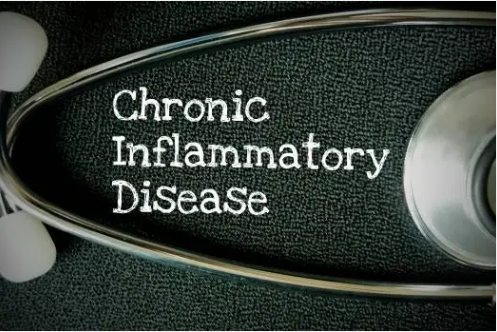In today’s fast-paced world, where uncertainty and self-doubt can easily overshadow optimism, the power to reshape one’s mindset is a vital tool for personal growth and fulfillment. Positive affirmations stand out as a simple yet profound practice—one that empowers us to consciously direct our thoughts, build resilience, and set the foundation for a brighter future.

Understanding Positive Affirmations
Positive affirmations are short, intentional statements designed to reflect aspirational beliefs or desired realities. These phrases, repeated with purpose, help challenge and reframe negative narratives, fostering a mental environment that emphasizes self-worth and possibility. Examples include:
-
“I am worthy of love and happiness.”
-
“I possess the strength to overcome any challenge.”
-
“Every day, I am becoming a better version of myself.”
These affirmations work by focusing attention on meaningful strengths and goals, gently shifting the focus away from doubt and towards empowerment.mentalhealth+1
The Science Behind Positive Affirmations
Research in psychology and neuroscience demonstrates that our thoughts continuously mold our emotional states and behaviors. Cognitive Behavioral Therapy (CBT) is grounded in the principle that changing thought patterns can lead to healthier emotions and actions. Positive affirmations actively harness the brain’s neuroplasticity—its ability to create new neural pathways in response to repeated experiences.stevegranthealth+1
Key Scientific Insights:
-
Neuroplasticity: Practicing affirmations encourages the brain to form new connections by repeatedly activating regions tied to positive thinking and self-worth.odu+1
-
Self-Affirmation Theory: This theory suggests that affirming one’s core values boosts self-integrity, resilience, and motivation. Neuroimaging studies show that self-affirmations activate the brain’s reward centers, promoting well-being and stress reduction.wellspringprevention+1
-
Stress Reduction: Regular use of positive affirmations has been linked to decreased stress hormone levels, improved problem-solving under pressure, and enhanced self-confidence.napsindia
-
Behavioral Change: Scientific evidence shows affirmations can motivate healthy habits, acceptance of beneficial information, and even influence physical health outcomes.mentalhealth+1
Implementing Positive Affirmations in Daily Life
Making affirmations a part of your daily routine is practical and deeply impactful. To begin:

-
Identify Limiting Beliefs: Pay attention to recurring negative thought patterns that hinder growth.
-
Craft Personalized Affirmations: Create statements that directly counter those limiting beliefs and resonate with your values and goals.
-
Practice Consistently: Repeat affirmations daily—ideally in the morning or before challenging situations. Speaking them aloud and pairing them with mirror work enhances their effect.positivepsychology
-
Visualize Success: Incorporate visualization, imagining yourself embodying the affirmation. This strengthens the emotional and cognitive impact.
-
Record and Reflect: Journaling your progress and noting shifts in mood or behavior can reinforce results.
Real-Life Applications and Transformations
The life-changing potential of affirmations can be observed in countless personal stories:
-
Maria, once a struggling artist plagued by self-doubt, began daily affirmations focused on her creativity. In just a few months, newfound confidence ignited her passion and led her to a thriving career.
-
James, after facing career setbacks, embraced affirmations centered on resilience and opportunity. This practice not only restored his optimism but also propelled him towards entrepreneurship and renewed purpose.
-
Studies also illustrate affirmations’ power to reduce anxiety, boost academic achievement, and encourage positive health behaviors, demonstrating their versatility across diverse life situations.scholar.dominican+1
Conclusion: Harnessing Your Inner Strength
The journey towards a positive, empowered mindset often starts with a single intentional affirmation. By integrating positive affirmations into daily life, you unlock new pathways for emotional resilience, motivation, and personal excellence. This practice reminds us that our words have power—they can reshape our self-image, influence our actions, and transform our reality.
Embrace the practice of affirming your worth and capabilities. Trust that, through persistence and self-kindness, you can cultivate the mindset needed for meaningful change. Affirm your greatness today and witness the beginning of your own transformative journey!
References:
-
[The science of affirmations – David Hamilton PhD]drdavidhamilton
-
[The Science Of Affirmations (Mental Health)]mentalhealth
-
[Positive Affirmations and its Benefits on Psychological Well-being]napsindia
-
[Scientific Basis for Affirmations]wellspringprevention
- https://pmc.ncbi.nlm.nih.gov/articles/PMC4814782/
- https://drdavidhamilton.com/the-science-of-affirmations/
- https://www.mentalhealth.com/tools/science-of-affirmations
- https://positivepsychology.com/daily-affirmations/
- https://wellspringprevention.org/blog/the-benefits-of-positive-affirmations/
- https://www.stevegranthealth.com/articles-posts/the-science-of-affirmations-reprogramming-your-mind-for-behavioural-change/
- https://www.napsindia.org/wp-content/uploads/2020/journal/Jan-2020-Vol-13-1/Positive%20Affirmations%20and%20its%20Benefits%20on%20Psychological%20Well-Being.pdf
- https://pmc.ncbi.nlm.nih.gov/articles/PMC6931103/
- https://scholar.dominican.edu/cgi/viewcontent.cgi?article=1010&context=psychology-senior-theses
- https://www.odu.edu/equity/civility-month/affirmations
- https://genius.inspira.or.id/index.php/gj/article/view/429
- https://www.lifescied.org/doi/10.1187/cbe.22-02-0022
- https://www.frontiersin.org/articles/10.3389/fmed.2022.909789/full
- https://arccjournals.com/journal/asian-journal-of-dairy-and-food-research/DR-2227
- https://link.springer.com/10.1007/s10734-019-00464-7
- http://www.emerald.com/gkmc/article/72/4-5/523-535/104113
- https://bryanhousepub.com/index.php/jrve/article/view/152
- https://link.springer.com/10.1007/s11192-023-04846-8
- http://link.springer.com/10.1007/s11192-015-1773-5
- http://www.sciencepg.com/article/j.rd.20240501.16

